Filmography
Dance films
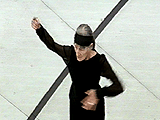 |
Under/line CH4 3 mins 2001
I asked Wayne McGregor if he would like to work with an older dancer.
We particularly wanted to create a piece for Diane Payne Meyers,
(then aged 73) which showed off her grace. The sound track is by
Scanner.
See
further notes in LIVE PAGES
|
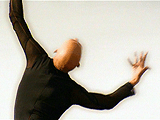 |
Horizone CH4 9 mins 2001
Wayne McGregor suggested to me that we do a Dance for Camera together
and Horizone is the result. It was mostly shot in Morocco. The score
is by Jocelyn Pook. |
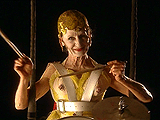
|
Dancing Under the Dustcover CH4 9 mins 2000
I met Diane Payne Meyers to discuss making a film with an older
dancer. She had told me she couldn’t send her CV, I had to
meet her to see it. She produced an old guide book to Paris in which
she had stuck photos, shopping lists, cuttings etc. This book became
the starting point for the film which is a mixture of pixilation
and live action.
See
further notes in LIVE PAGES |
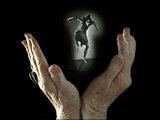 |
Dancing Inside BBC2 26mins 1999
I worked with choreographer Jane Dudley, then 86, to create this
film in which she reflects on ageing and approaching death. I was
keen to see how film could be used to make movement sequences using
whatever movement an older dancer was still capable of and also
using manipulation of bodies to create new movements. Computer programmes
have advanced hugely since this was made and some of the film looks
very dated now. The portrait of Jane remains emotionally strong
in spite of this.
See
further notes in LIVE PAGES |
 |
Capoeira Quickstep CH4 /BFI 26
mins 1991
The film is a ’conversation’ with Brazilian Roberto
Mader as I re examine my early impressions of Latin American culture
and ’the other’. Although not conceived as a dance piece
it contains a lot of dance sequences. . |
Other Films
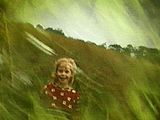 |
Mixed Feelings CH4 3 min 1997
This work is a series of four 3 minute films each portraying a different
person talking about their mixed feelings following an abortion.
I directed two of them.
All four use live action and computer manipulation in some way.
It was the first time CH4 had agreed to a budget sufficient to use
visual effects and some animation. The look of the series has become
very widely used since then. |
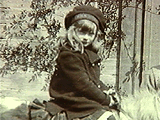 |
Album BBC Picture This Series
26 min documentary 1996
In the early 60’s I bought an old album of photographs from
a barrow in Farringdon Road, which was then well known for its second
hand books.
The photographs dated from 1898 to 1911.
In 1996 I set out to trace the places and people in the pictures.
I wanted to know who the album had belonged to and why it ended
up on a barrow.
See
further notes in LIVE PAGES |
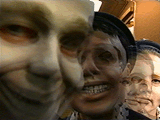
|
Gotta Get Out CH4 11 min 1995
I am very claustrophobic but less than I was thanks to cognitive
psychologist Dr Mike Wang. At a time when claustrophobia was limiting
my life to a crippling degree, I decided to make a film about it.
Darren Walsh had been a student at Farnham, where I was teaching.
There he started to evolve a style using masks and pixilation that
seemed very appropriate for my subject. I asked him to direct the
animation.
The film simply tells something about my claustrophobic experiences
from the conversations Alison Steadman, the actress, and I had as
we developed the voice over.
For more information go to www.yadinproductions.com
|
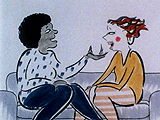 |
Blind Justice series/ Murders Most Foul
CH4 7 min 1987
I left Leeds Animation Workshop after Give Us a Smile. I felt I
had so much research as a result of that film that I wanted to make
a series. I proposed this to CH4 with a group of women directors
– Marjut Rimminen, Monique Renault and Christine Roche. We
received development money from Paul Madden, the commissioning editor
for Animation. I was delighted when Orly Yadin agreed to join the
group as the Producer. Murders Most Foul was one
of the series.
The action is set with the court as a theatre, the jury as audience.
The story uses quotes from real cases where often the woman is seen
as in some way responsible for her own murder by leading the man
on. In consequence he receives a lighter sentence.
I chose to use drawn animation although at the time Marjut suggested
I pixilate it with live characters. In retrospect I have always
wished I had taken up her suggestion.
For more information go to www.yadinproductions.com
|
 |
If By Chance we should Meet Halas and
Bachelor 2 min 1971
A man and a woman meet and fall in love. However while she dreams
of their merging together, he dreams of being swallowed up by her.
A parasitic plant grows over them and they become skeletons inside
it. One walks off. The other is left desolate.
Halas Bachelor funded this film while I was working for them. It’s
a bleak piece about relationships, drawn in pencil. The film has
deteriorated so much it’s not really visible and the sound
track has disappeared |
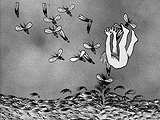 |
Up Halas and Bachelor 1 min 1970
An androgynous person is climbing up a swaying tower of humans who
hang in the air. Many drop into a sea of flies below them. The flies
pick at their brains. At the top of the tower a lotus flower opens
and radiates light.
This one minute film was sponsored by Halas Bachelor. It was one
of three films made for a competition called ‘The Condition
of Man’. It was the first film I had screened in a festival
– Tours - I was the only woman with a film there and was interviewed
by French TV as a result. |
 |
Wanderings of Ulick Joyce 1968
BFI Experimental Film Fund
This was my first film. I made it with the support of the British
Film Institute Experimental Film Fund. I had never animated anything
before. The story was very roughly inspired by a Flann O’Brien
short story. The Australian director, Bruce Beresford, was then
heading the fund. He was an energetic and helpful producer. The
experience of that fund is a long way from the application processes
of today. I submitted a budget of £50. Bruce came back to
me with £500.
I used the film to get my first professional job as an assistant
animator on Yellow Submarine. |
LEEDS ANIMATION WORKSHOP
Leeds Animation Workshop was set up in 1978 to make campaigning films.
The films were intended for educational use by schools, colleges, councils
and trade unions. The workshop was funded by Yorkshire Arts Association,
Arts Council Community Arts Programme and Job Creation Schemes. Later
it received support from CH4 Film Workshops scheme.
When the group started I was the only person with any animation skills
and the idea was to teach others to enable them to make films about issues
that were important to them.
I left in 1984. Leeds Animation is still active today.
To find out more about the work of Leeds Animation Workshop go to www.leedsanimation.org.uk
 |
Give us a Smile 1983
Men call out at her on the street, she is blamed for encouraging
and provoking their attention, told to stay indoors at night as
the streets aren’t safe for a woman to be out alone. Representing
‘everywoman’ the film character decides to take action
against the sexism she encounters in everyday life. The tables are
turned.
This film won a ‘Special Mention’ at Tampere short film
festival. It was made at a time when the Women’s Movement
had gained great strength in the UK. It also coincided with a series
of murders of women by Peter Sutcliffe who prowled Leeds for his
victims. There was also a movement called Women Against Violence
Against Women who were very active burning down sex shops, spraying
graffiti on particularly sexist advertisement hoardings and taking
a strong stand on the pornography industry. |
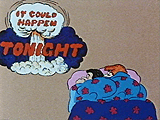 |
Pretend You’ll Survive
1981
A woman is worried for herself and her family in the event of a
nuclear blast. The government proposals for civil defence seem woefully
inadequate. Looking at the situation and nuclear proliferation she
concludes that disarmament is the solution.
This was made in the days of the Greenham Common Women’s camp
and huge demonstrations against US weapons sited in the UK. The
Campaign for Nuclear Disarmament and the newly established European
Nuclear Disarmament were extremely active as more countries gained
and increased their nuclear arsenals. The film was widely used by
campaign groups and also in schools and colleges. |
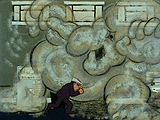 |
Risky Business 1980
Health and Safety representative Carol is accompanied by a robot
who knows the regulations but doesn’t know the answers. Together
they tour her factory encountering a variety of common problems
which Carol is anxious to solve.
Used widely by Trade Unions and Health and Safety groups to introduce
discussion in the workplace. |
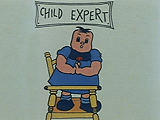 |
Who Needs Nurseries-We Do 1979
This was the first of the Leeds Animation Workshop campaigning films.
It portrays a group of nursery age kids, presided over by three
‘chairbabies,’ discussing their need for nursery places
and their problems arising from a lack of them. With little dissent
amongst their group they decide to take action. .
Many newly formed Women’s Groups were campaigning for more
nursery places at this time. The film was widely used to start of
the meetings. |
|

















